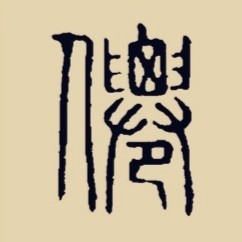 bikbok
bikbok -
Abstract1: Domesticating translation and foreignizing translation are two
different translation strategies. The former refers to the translation
strategy in which a transparent, fluent style is adopted in order to minimize
the strangeness of the foreign text for target language readers, while
the latter designates the type of translation in which a target text deliberately
breaks target conventions by retaining something of the foreigness of the
original. But what is the translation practice like in China? Do translators
tend to use foreignizing methods or domesticating ones? What are the factors
that affect their decision making? This paper tries to find answers to
the questions by looking into the translation of English metaphors into
Chinese.
Key words: domesticating translation; foreignizing translation; metaphor;
target
language reader
1. Introduction
"Domesticating translation" and "foreignizing translation" are the terms
coined by L. Venuti (1995) to describe the two different translation strategies.
The former refers to the translation strategy in which a transparent, fluent
style is adopted in order to minimize the strangeness of the foreign text
for target language readers, while the latter designates the type of translation
in which a target text "deliberately breaks target conventions by retaining
something of the foreigness of the original" (Shuttleworth &Cowie, 1997:59).
The roots of the terms can be traced back to the German philosopher Schleiermacher"s
argument that there are only two different methods of translation, " either
the translator leaves the author in peace, as much as possible, and moves
the reader towards him; or he leaves the reader in peace, as much as possible,
and moves the author towards him" (Venuti, 1995: 19-20).
The terms "foreignization" and "domestication" may be new to the Chinese,
but the concepts they carry have been at least for a century at the heart
of most translation controversies. Lu Xun (鲁迅) once said that "before
translating, the translator has to make a decision : either to adapt the
original text or to retain as much as possible the foreign flavour of the
original text" (Xu, in Luo, 1984: 315).
But what is the translation practice like in China? Recently I have read
two articles which show completely conflicting views on this question.
In his article entitled "Chinese and Western Thinking On Translation",
A. Lefevere makes a generalization based on his comparison of Chinese and
Western thinking on translation,
When Chinese translates texts produced by Others outside its boundaries,
it translates these texts in order to replace them, pure and simple. The
translations
take the place of the original. They function as the original in the culture
to the extent
that the original disappear behind the translations. (Bassnett & Lefevere,
1998:14)
However, Fung and Kiu have drawn quite different conclusions from their
investigation of metaphor translation between English and Chinese,
Our comparison of the two sets of data showed that in the case of the English
metaphor
the image often than not retained, whereas with the Chinese metaphors,
substitution is
frequently used. [...] One reason perhaps is that the Chinese audience
are more familiar with
and receptive to Western culture than the average English readers is to
Chinese culture. (Fung, 1995)
The above conflicting views aroused my interest in finding out whether
the Chinese tend to domesticate or to foreignize when they translate a
foreign text. In what follows I shall not compare translation by Western
and Chinese translators, but rather look into the translation of English
metaphors into Chinese.
2. What is Metaphor?
The Random House Unabridged Dictionary (second addition) defines metaphor
as "a figure of speech in which a term or phrase is applied to something
to which it is not literally applicable in order to suggest a resemblance."
While according to BBC English Dictionary, "metaphor is a way of describing
something by saying that it is something else which has the qualities that
you are trying to describe."
Peter Newmark defines metaphor as "any figurative expression: the transferred
sense of a physical word; the personification of an abstraction; the application
of a word or collocation to what it does not literally denote, i.e., to
describe one thing in terms of another. [...] Metaphors may be "single"
-- viz. one-word -- or "extended" (a collocation, an idiom, a sentence,
a proverb, an allegory, a complete imaginative text" (1988b:104).
Snell-Hornby rejects Newmark"s concept of the "one-word metaphor" in favour
of Weinrich"s definition that "metaphor is text" (1988:56). She believes
that a metaphor is a complex of (at least) three dimensions (object, image
and sense), reflecting the tension between resemblance and
disparity" (1988: 56-57).
This paper will follow the idea that "metaphor is text" which includes
an idiom, a sentence, a proverb and an allegory.
3. What has been said about the translation of metaphor?
"In contrast to the voluminous literature on metaphor in the field of literary
criticism and rhetoric, the translation of metaphor has been largely neglected
by translation theorists" (Fung, 1995). In his article "Can metaphor be
translatable?", which is regarded as an initial discussion of the subject,
Dagut says,
"What determines the translatability of a source language metaphor is not
its "boldness" or "originality", but rather the extent to which the cultural
experience and semantic
associations on which it draws are shared by speakers of the particular
target language"
(1976).
Snell-Hornby takes metaphor translation in the light of the integrated
approach. She says that
The sense of the metaphor is frequently culture-specific, [...] Whether
a metaphor is
"translatable" (i.e. whether a literal translation could recreate identical
dimensions), how
difficult it is to translate, how it can be translated and whether it should
be translated at all
cannot be decided by a set of abstract rules, but must depend on the structure
and function of
the particular metaphor within the text concerned ". (1988: 56-9)
van den Broeck conceives the treatment of metaphors as a functional relevancy
to the communicative situation (1981). Mary Fung also considers translating
metaphor as a communicative event which is both interlingual and intercultural
(1995).
Different from the semantic, cultural and functional perspectives mentioned
above, Newmark holds a more pragmatic approach. Drawing on his practical
experience, he proposes several procedures for translating metaphor: (1)
Reproducing the same image in the target language; (2)
Replacing the SL image with another established TL image; (3) Replacing
the metaphor by simile; (4) Retaining the metaphor and adding the sense;
(5) Converting the metaphor to sense; (6) Omitting the metaphor if it is
redundant.
Discussions of the subject, especially those written in Chinese, are also
pragmatic rather than theoretical. In E-C Translation Coursebook (1980
) which is the most widely used translation textbook in China, Zhang Peiji
) and his co-compilers summarized three popular methods for translating
metaphors: (1) Literal translation (similar to Newmark"s first procedure);
(2) Replacing the SL image with a standard TL image (similar to Newmark"s
second procedure); (3) Converting the metaphor to sense (Same as Newmark"s
fifth procedure).
Based on the methods suggested by Zhang and his colleagues, Guo Zhuzhang
) proposes five in A Practical Coursebook in Translation Between
English and Chinese (1996, revised edition): (1) Literal translation plus
explanation; (2) Literal translation plus meaning; (3) Adapting the metaphor;
(4) Using Chinese couplets to render the English metaphor; (5) Replacing
the SL image with a TL image. 更多论文,请访问http://www.icn.net.ru
4. How Are Metaphors Translated?
The above methods, envisaged as guidelines for the translation students
as well as the practical translators, are quite exhaustive of rendering
the metaphor. Which of the methods of translation are actually domesticating
and which ones foreignizing? In the following section I will cite some
examples of metaphor translation from two translation textbooks, two dictionaries
and two articles as the source for the analysis.
 奇石珠宝真君
奇石珠宝真君 -
So-called human resources accountant, is refers to organization"s human resources cost and the value carries on the measurement and report kind of accountant the procedure and the method. It is accountant a discipline development new domain, is new accountant which the person source tube Neo-Confucianism attending economics mutually seeps forms theory.
1.Our country establishes the human resources accountant"s necessity .
(1)Macroeconomic regulation and control need. The market economy system unceasing consummation, enable the human resources to have more economical characteristics, the request confirms the human resources Cheng Muhe the value. Through the human resources accounting report, the country may grasp various enterprises human resources development maintenance present situation, thus adopts the corresponding macroeconomic regulation and control method, the promotion human resources balance between supply and demand, the definite human resources development strength to, the guidance human resources reasonably flows, in on macroscopic optimizes the human resources the disposition .
(2)The enterprise enhances the economic efficiency the need. Under market economy condition, enterprise in order to obtain the talented person, unceasingly enlarges to the human resources investment, including improves the treatment, the improvement interpersonal relationship, provides the superior working condition, the on-the-job training and so on. But invests benefit how, this is enterprise superintendent issue of concern, this requests on accountant carries on the calculation to the human resources income and the cost, inspects its economic efficiency .
(3)Financial information user"s demand. The knowledge economy time arrival, causes the human resources the factor to manage the success or failure to the enterprise the influence more and more in a big way, the investor more and more is also big to the human resources information demand, this is the most basic agent which human resources accountant can exist and develop .
(4)Accounting principle request. One is at present includes the human resources investment works as the time expense, violated the power and responsibility to have the system principle. Two is the human resources investment disbursement profits the time not to be easy to distinguish, it profits the degree is measures with difficulty. Three is the human resources investment disbursement expense, inevitably causes various issue of profit and loss to report not really, causes the policy-making fault. Therefore, from follows accountant the principle the angle to say, implementation human resources accountant also very much has the necessity .
2.Human resources accountant in our country establishment condition
(1)Human resources legal system. Human resources has which to the enterprise, wants the usage law laws and regulations to perform to confirm, also should have the corresponding legal standard to its exchange, guarantees the enterprise to hire staff"s labor force property rights, to break a contract to the midway leaves job staff"s punishment power, guarantees the enterprise human resources the relative stability .
(2)Vigorously develops the consummation human resources market. On the one hand, a perfect human resources city field energy provides the reasonable talented person market price, provides the basis for the accounting; On the other hand, a perfect human resources market existence, causes the person to be able to flow from the mountain, the enterprise may freely gain its needs the talented person. Only then, the society only then possibly produced to the human resources information true realistic demand, human resources accountant also only then had its existence social basis. At present, our country talented person market, the service market although had the certain development, but very was still imperfect, but the entrepreneur market nearly did not exist, established and the consummation human resources market was as soon as possible works as service .
(3)Does the experiment site work. The experiment site may choose the school, the hospital, the accounting firm, the law office, the scientific research unit, the high tech type enterprise and so on the human resources crowded unit, the accumulation experience, both impetus theory development, and the manner strength resources accountant"s comprehensive implementation has made the preparation.
 meira
meira -
The so-called human resources accountant , mean that carries on measuring and a kind of accounting procedure and method of the report to human resources cost and value organized. It accounting one new field of discipline development, it is human resources management with accounting that permeate new accounting theory that form each other.
1, our country sets up the human resources accountant"s necessity
(1)Need of macro adjustments and controls. The constant completion of the market economic system, make the human resources have more economic characteristics , demand to confirm Cheng Mu and value of the human resources . Through the accounting report of human resources, the country can grasp the manpower resources development of every enterprise and safeguard the current situation , thus adopt the corresponding means of macro adjustments and controls, it is balanced to promote the supply and demand of the human resources, it confirm manpower resources development strength to,lead because there aren"t human resources , optimize by disposition of human resources in macroscopic.
3)The financial information user"s demand. The arrival of the era of knowledge-driven economy, make the influence on managing success or failure in enterprises of factor of the human resources older and older, investor to human resources demand of information more and more heavy, this human resources most basic reason that accountant can store in and develop.
4)The accountant checks and calculates the requirement for the principle. Make the investment , charge current period expenses to human resources at present , violate power and responsibility happen principle of making. Second, human resources invest in benefited issue of expenditure difficult to distinguish , its benefited intensity is more difficult to measure. Third , invest the expenditure expenses the human resources , must make every profit and loss report unureal , cause the decision fault . So in term of following accounting principle but speech, implement human resources to be accountant even very much necessary. 2, human resources accountant in terms that our country set up
2, the condition which the human resources accountant sets up in our country
( 1) Legalization of human resources . To the human resources that enterprises have, should confirm with the laws and regulations, there should be corresponding legal norm too to exchange it, guarantee enterprise to workforce ownership of worker hired , to break a contract , leave office the worker"s punishment right midway, so as to ensure the relative stability of the enterprise human resources.
2)Develop and improve the market of human resources in a more cost-effective manner. On one hand, a complete market of human resources can offer a market price to a reasonable talent , offer basis on which the accountant checks and calculates; On the other hand, one complete human resources existence of market, make people since the mountain flows, enterprise can obtain to his necessary talent since. Only in this way, the society may produce the real current demand for human resources information , human resources accountant have his social base storing in either. At present, although human resources pool of our country , labour market get certain development, but still not very complete, but entrepreneur"s market hardly exists, it is the task of top priority to set up and improve the market of human resources as soon as possible
3)Launch the work of launching a pilot project . Can choose intensive units of human resources such as the school , hospital , accounting firm , lawyer"s office , R&D institution , Hi-Tech type enterprise ,etc. in pilot project, accumulate experience , has not only promote the development of theory but also made preparation for overall implementation of the human resources accountant .
 芝华塔尼欧的少年
芝华塔尼欧的少年
-
强
